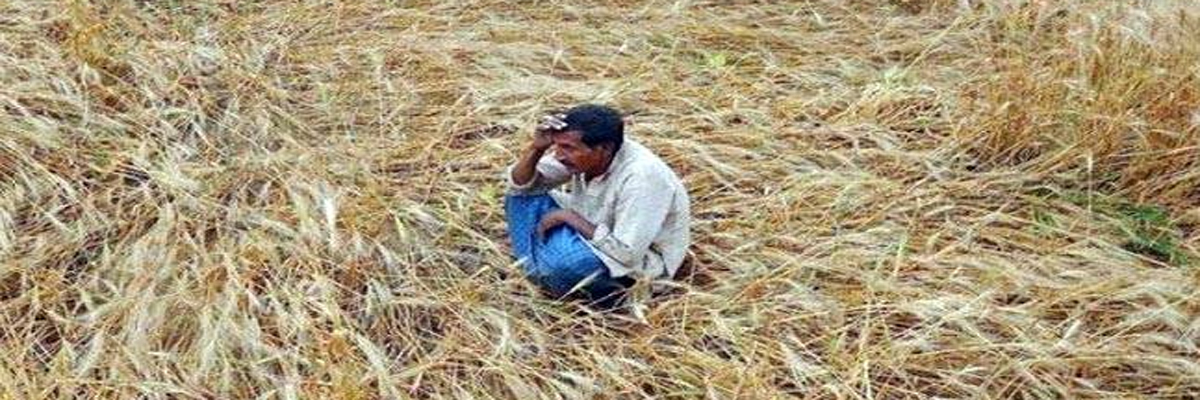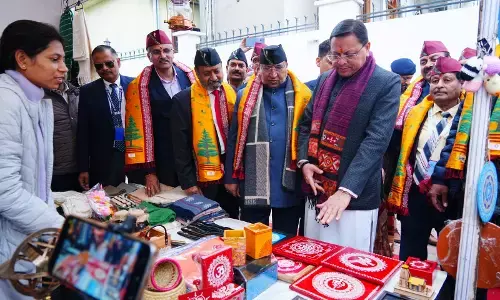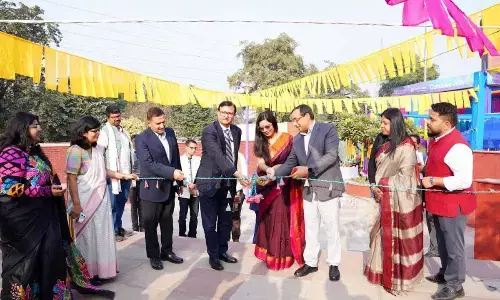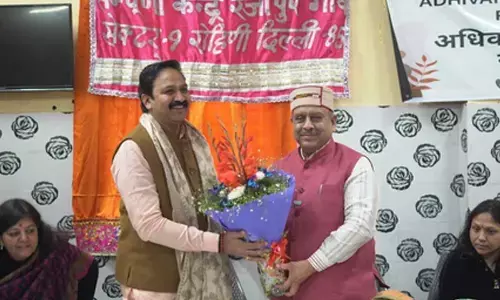Crop insurance scheme has benefited farmers more

One bad crop season leads to a situation of destruction of crops, farm assets, crop losses The frequent natural calamities are forcing farmers in to mounting debt from informal money lenders at exorbitant interest rates and ultimately leading to widespread farm distress and farmers suicides
In India still about 50 percent of the population depends on agriculture and about 12 crore farm families directly depend on it for their livelihoods. Even after 70 years of independent planning, still Indian agriculture depends on vagaries of monsoon like droughts, floods and other natural calamities. The risk in Indian agriculture is much higher than other developing countries. A single natural calamity can create havoc in the whole agrarian economy or in localized areas by destroying the crops.
One bad crop season leads to a situation of destruction of crops, farm assets, crop losses. The frequent natural calamities are forcing farmers in to mounting debt from informal money lenders at exorbitant interest rates and ultimately leading to widespread farm distress and farmer’s suicides.
The wide spread farmers agitations across many states including rich states like Maharashtra, Punjab, Himachal Pradesh and Karnataka and recently in National Capital city Delhi and also in Mumbai is clearly pointing to deep rooted farmers distress. Keeping this in view, government brings forth a lot of plans for improving the plight of farmers.
The crop insurance is a primary strategy by the government to manage the crop risk associated with unseasonal rainfalls, floods, other natural calamities. The most popular scheme in this area is Pradhan Mantri Fasal Bima Yojana (PMFBY).
The central and state governments spent Rs. 32,606 crores to subsidize crop insurance premiums, without maintaining proper farmers’ records till 2015-16, as per Comptroller and Auditor General of India report.
With the past experience in implementing the various crop insurance schemes over the years, PMFBY was introduced by the central government in 2016-17 with a target to cover the total cropped area in India. The yearly targets set were modest with 30per cent of total cropped area covered in 2016-17, which achieved its target.
The scheme is compulsory for the loanee farmers, while for non-loanee farmers it is optional. In 2016-17, this scheme covered 5.7 crores farmers out of 12 crores, consisting 4.41 crore loanee and 1.33 non-loanees farmers.
In terms of gross cropped area, the scheme covered 58.1 million hectares out of 194 million hectares. In short, PMFBY achieved its target both in terms of coverage of area and also number of farmers but there is mounting evidence of denial of claims.
In same year, insurers received premium amount of Rs. 22,337 crores from PMFBY, farmer’s contribution to the premium was Rs. 4,411 crores, and rest was contributed by the government to the insurer as subsidy towards premium. It indicates that while overall premium paid was 10 per cent of the sum insured under crop loan, about two per cent was paid by the farmers and the remaining 8 per cent was paid by the government.
However, in the same year, claims settled with farmers were Rs. 13,500 crores with a claim settlement ratio to the total premium was below 60 per cent. The difference between premium collected and claims paid is Rs.8837 crore. The high gap between premium collected and claim settlements may be either due to inefficiency in operation of insurers or they may be getting above normal profits.
Similarly, in the following years, 2017-18 and kharif season of 2018-19, the data shows that the claims settlement to total premium ratio was below 60per cent. The lower claims settlements and delay in claim payments over the past three years in spite of huge subsidy by government, indicates inefficiency and less competition among insurers.
The market determined premiums are determined based open tendering system for each cluster comprising a few districts (2-5 neighboring districts in one cluster) with similar agro -ecological conditions. In this, all insurers (insurance companies) can participate in the bidding and the lowest bidder in terms of premium quoted. Final bidder selection for the cluster is based on the lowest weighted average premium rate.
All crop insurance activities in that particular cluster has to be operated by the winner-insurer for the notified year. Under this scheme, there are about 5 public and 13 private insurers who bid for the cluster for all notified crops.
Evidence from many states suggest, that there are insufficient bidders in rain fed, remote and backward districts. This could result in an oligopoly situation under which there is scope for cartelisation of the insurers to rig premium rates, so that market determined premium rates are higher than the actuarial rates. In these backward districts, it was found that in some instances market determined premiums were as high as 25per cent due to few bidders participating in the bidding process, leading to above normal profits for the insurers.
The government needs to take steps to increase competition among insurers to lower market-determined premium rates charged by insurers. Further, there is a need to strengthen the State Level Co-ordination Committee on Crop Insurance (SLCCCI) and District Level Monitoring Committee (DLMC) in collaboration with financial institutions and insurers to promote healthy competition.
In India, most farmers are unaware of PMFBY and its modalities. First, there is a need to increase awareness in front-line field staff like, department of agriculture, banks and insurers, who could be the game changer for the scheme. Currently, they themselves need to be educated about the scheme modalities which will help them in disseminating proper information to farmers.
There is a need to sensitize first contact point of farmers like input dealers, gram panchayat members and agricultural extension officers to increase awareness of scheme.
It is observed that uniform cut-off dates for premium payments are not ideal for diverse agro-climatic conditions across the districts. There must be flexibility to decide cut-off dates for premium payments at local level to be entrusted to the DLMC.
The roles and responsibilities of DLMC needs be enhanced so that, it can announce cut-off dates in time, conduct field level inspections in case of any calamity and decide mid-season or end of the season claims and see that every farmers gets it in time. The denial and delay of claim issue can be solved, that can reduce dependency on moneylenders.
It is evident that there is a lack of infrastructure in terms of dedicated field staff by the insurers to address grievances of the farmers, to inspect yield losses etc. Therefore, there is a need to increase the efficiency in the whole set of operations like the functioning of weather stations, crop-cutting experiments, use of drones, satellite images, and GIS-based mobile phones, to estimate quick yield losses, which can provide accurate information to all stakeholders.
Many insurers, agricultural and bank officers are complaining about non-functioning of PMFBY portal. The problem with portal is twofold, first one is a lack of awareness about the portal and second one is non-functionality most times in various locations.
There is a need to enhance internet connectivity. Given that agriculture in India is a risk field, farmers need to be given a helping hand by insuring crop losses under PMFBY in war footing. Popularising crop insurance can also help in reducing demand for unhealthy frequent crop loan waivers across all states and help in financial discipline among the farmers.
(The authors are Principal Scientist, ICAR-Centre Research Institute for Dryland Agriculture and Faculty, Institute of Insurance and Risk Management, Hyderabad respectively. Views expressed are personal and do not represent institutes they belong to)
By A Amarender Reddy, Renu Bala


















